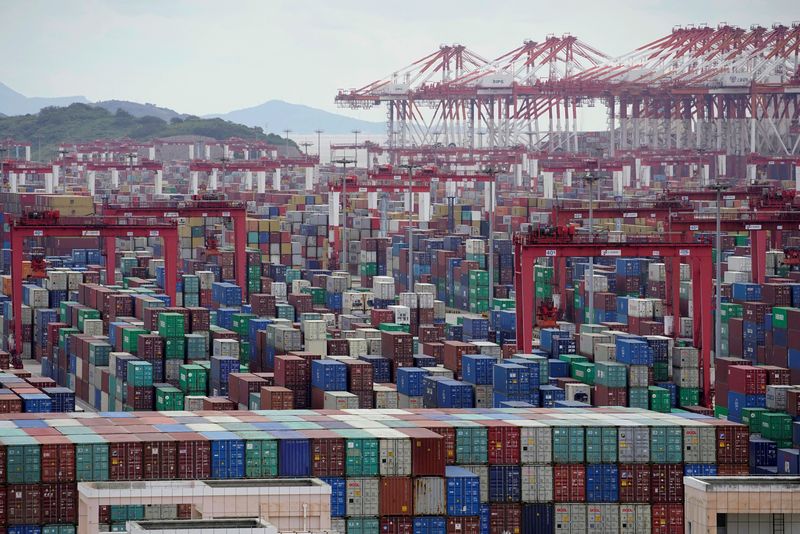By Jamie McGeever
(Reuters) - A look at the day ahead in Asian markets from Jamie McGeever, financial markets columnist.
Asian markets are set to open on the defensive on Thursday, with investors anticipating another slump in Chinese trade activity against a backdrop of rising U.S. bonds yields, new 2023 highs in oil prices and a steep selloff on Wall Street.
Malaysia's central bank is expected to keep interest rates on hold at 3.00% for a second meeting, Chinese FX reserves data and Australian trade figures are also due, and G20 finance and energy ministers meet in India ahead of the leaders' summit this weekend.
The general market mood is souring as September unfolds, the latest catalyst being a surprisingly strong reading of U.S. services sector activity and price pressure that put a possible Fed rate hike later this year back on the table.
Oil's rise to new highs for the year continue to unnerve investors. For the first time this year U.S. crude futures are more expensive than they were 12 months ago, meaning the disinflationary impulse has now reversed.
Good news for oil exporters, not so good for oil importers like Japan, which imports almost all its energy. The yen is extremely weak, and senior Japanese officials are warning that all options to support the currency are on the table.
Elsewhere in Asian FX markets, China's yuan slid to a 10-month low on Wednesday through 7.32 per dollar and is a whisker from plumbing depths not recorded since late 2007.
Investors could get further reminders on the currency's vulnerability from Chinese trade and FX reserves figures on Thursday.
Chinese trade has been one of the biggest economic red flags this year. Exports and imports have both plunged, reflecting weak overseas demand for Chinese goods and weak domestic demand.
Economists polled by Reuters expect more of the same in August - a 9.2% year-on-year fall in exports and a 9.0% fall in imports - although not quite as severe as recent months.
FX reserves tend not to be big market-movers, but another decline could be seized upon - rightly or wrongly - as further evidence of the yuan's vulnerability and Beijing cooling on dollar-denominated assets.
Beijing's nominal FX reserves have risen this year, even as the nominal value of Beijing's holdings of U.S. Treasuries has fallen to a 14-year low. This suggests China is diversifying, either across currencies, dollar-denominated assets, or both.
Reserves are expected to have dipped to $3.187 trillion in August from $3.204 trillion in July. At the end of last year they stood at $3.128 trillion.
Here are key developments that could provide more direction to markets on Thursday:
- China trade (August)

- Malaysia interest rate decision
- Australia trade (August)
(By Jamie McGeever; Editing by Josie Kao)